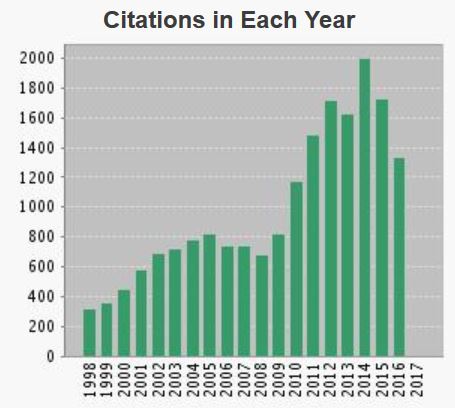[This is a guest blog post. The author has asked to remain anonymous.]
I would like to talk about my experience as a co-author in a paper that was submitted to Aging, a journal listed in Beall’s list as “potential, possible, or probable predatory.” Unlike many other journals in this list, Aging has a high, legitimate impact factor (6.432) and is listed both in Pubmed and MEDLINE.
It also features some well-known names on its editorial board, many of whom have also published in the journal. However, in my experience, the whole journal seems to be run by a single man who pays no respect whatsoever to peer-review and who is taking advantage of the system for his own benefit.
After trying a couple of high impact journals, where it was rejected, the correspondent author submitted our paper to Aging. To our surprise, the paper was rapidly accepted by the Editor-in-Chief, Dr. Mikhail Blagosklonny, with only minor revisions. And by minor, I mean really minor: the first reviewer asked for a couple of PCRs and to include the quantification of a Western blot. The second reviewer simply corrected some typos.
But what made us suspicious of our “good luck” was the comment from the third reviewer. Apparently, he had little to say about the scientific merits of our work. Instead, he just asked us to cite five more papers in our manuscript. All of those papers were authored by Dr. Blagosklonny, the very same editor who was handling our submission.
Some of the authors (myself included) decided to write a letter to complain about the coercive citation. We addressed this letter to the two other Editors-in-chief listed in the Aging website at the time, Dr. David Sinclair and Dr. Judith Campisi. We never received a reply.
By then we found out that Aging is listed in Beall’s list. We also found claims that the peer-review process of Oncotarget (a journal also ran by Blagosklonny) is highly questionable and that Blagosklonny promotes the journal saying that papers can be accepted in 2-3 days. In fact, according to the dates displayed in the website, many submissions are indeed accepted within days, making unlikely — if not impossible — any serious peer review process.
We started pondering the possibility of withdrawing the paper. However, the corresponding author was reluctant, considering that the paper was already accepted and that Aging has a legitimate impact factor of 6.4. He is a young researcher who is at a stage in his career where he desperately needs to publish in high impact factor journals to grow.
We also tried to contact Sergey Dmtriev, listed in the Aging website as the director of Impact Journals, the publisher of Aging. This is where things started to get complicated. The website of Impact Journals did not work at the time, but I managed to obtain Dmtriev’s e-mail through the website of a company called Jetbrains (the biography available at the Aging website mentioned that Dmtriev was also CEO of this company). I sent him an e-mail asking him about the Aging journal and expressing my concerns.
But instead of obtaining a response from Dmtriev, the next day I received an e-mail from Dr. Blagosklonny, asking me to elaborate on my concerns in more detail. In the meantime, the corresponding author had sent a revised version of the paper, which had been accepted. Among other things, I asked Blagosklonny about the presence of Aging in Beall’s list, the coercive citation we had experienced, and the acceptance of papers within days in Aging and Oncotarget.
I also mentioned that it was very suspicious that the Impact Journals website did not exist. He replied with a very short e-mail. All he said was: “Dear XXX, We are now in a major transition to new website and restructuring the journal. I hope new website will clarify everything [sic]. Just be patient. Best regards.”
But that was not the end of it. Blagosklonny wrote an e-mail to the corresponding author saying that I was challenging the legitimacy of the journal. He also made a veiled threat to pull out the paper by saying that it was in “preliminary acceptance.” The corresponding author told him that we would talk to me to find out what had happened. To this, Blagosklonny replied sending a much warmer e-mail. He recommended him to discuss with me that “attack on positive decision is counter-productive” [sic].
He also said that he had forgotten to mention that our paper had also been seen by a fourth reviewer, whose verdict was also positive. This fourth review consisted of a simple paragraph filled with superficial comments about our work. The e-mail ended with the “good news” that the paper was going to be published free of charge. By then I decided to withdraw my name from the paper, which was published a few weeks later.
Blagosklonny’s personal citation index has skyrocketed since 2010, the same year he started Oncotarget and two years after he launched Aging. The two journals that cite him the most are Cell Cycle and Oncotarget, each with hundreds of citations to Blagosklonny’s articles. He is Editor-in-Chief in both of them. He is also cited quite often in Aging.
Blagosklonny has found a way to game the system in which everyone wins — everyone but science: authors get their papers published promptly in a high impact journal with a legitimate impact factor, while he boosts his citation index and cashes thousands of dollars per paper. This also protects him from being exposed, as most authors would have a lot to lose and nothing to gain.

